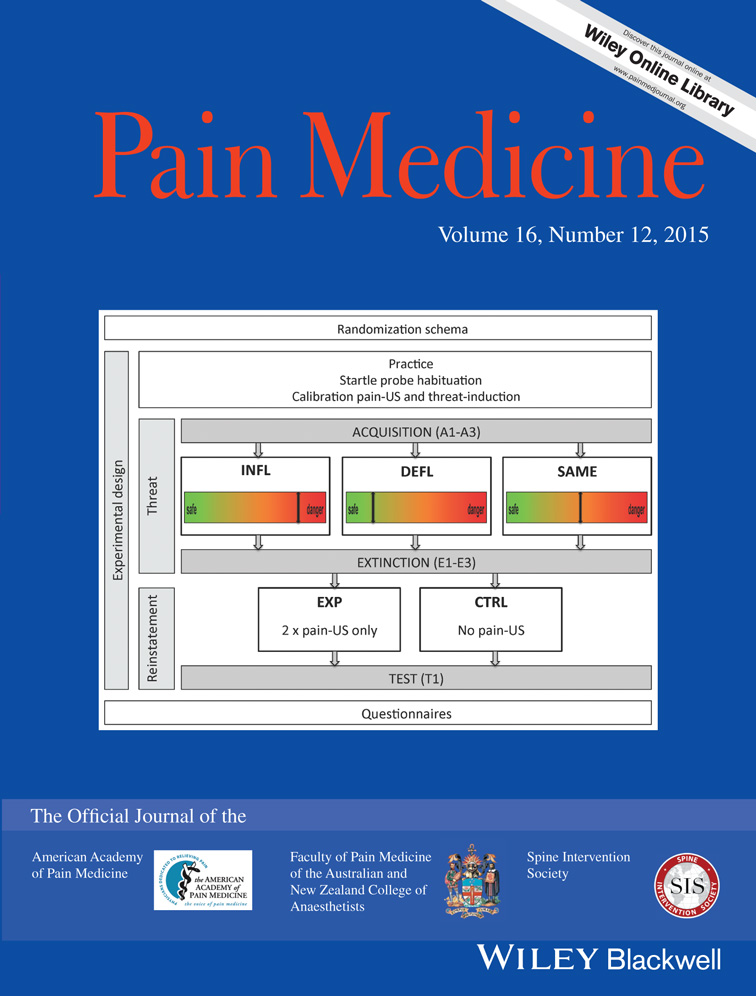
Lateral branch neurotomy for sacroiliac joint pain improves pain and physical function

Lateral branch neurotomy for sacroiliac joint pain improves pain and physical function
A randomized, placebo-controlled study to assess the efficacy of lateral branch neurotomy for chronic sacroiliac joint pain
Pain Med. 2012 Mar;13(3):383-98. doi: 10.1111/j.1526-4637.2012.01328.x. Epub 2012 Feb 2Did you know you're eligible to earn 0.5 CME credits for reading this report? Click Here
OE EXCLUSIVE
Dr. Patel discusses the use of lateral branch neurotomy for sacroiliac joint pain improves pain and physical function
Synopsis
51 patients experiencing sacroiliac joint (SIJ) pain were randomized on a 2:1 basis into two groups to either receive lateral branch radiofrequency (RF) neurotomy or a sham treatment. Following assessments over a 9 month period, results indicated that patients who underwent lateral branch RF neurotomy treatment noticed a significant decrease in pain, disability, and an increase in physical function.
Was the allocation sequence adequately generated?
Was allocation adequately concealed?
Blinding Treatment Providers: Was knowledge of the allocated interventions adequately prevented?
Blinding Outcome Assessors: Was knowledge of the allocated interventions adequately prevented?
Blinding Patients: Was knowledge of the allocated interventions adequately prevented?
Was loss to follow-up (missing outcome data) infrequent?
Are reports of the study free of suggestion of selective outcome reporting?
Were outcomes objective, patient-important and assessed in a manner to limit bias (ie. duplicate assessors, Independent assessors)?
Was the sample size sufficiently large to assure a balance of prognosis and sufficiently large number of outcome events?
Was investigator expertise/experience with both treatment and control techniques likely the same (ie.were criteria for surgeon participation/expertise provided)?
Yes = 1
Uncertain = 0.5
Not Relevant = 0
No = 0
The Reporting Criteria Assessment evaluates the transparency with which authors report the methodological and trial characteristics of the trial within the publication. The assessment is divided into five categories which are presented below.
3/4
Randomization
4/4
Outcome Measurements
4/4
Inclusion / Exclusion
4/4
Therapy Description
4/4
Statistics
Detsky AS, Naylor CD, O'Rourke K, McGeer AJ, L'Abbé KA. J Clin Epidemiol. 1992;45:255-65
The Fragility Index is a tool that aids in the interpretation of significant findings, providing a measure of strength for a result. The Fragility Index represents the number of consecutive events that need to be added to a dichotomous outcome to make the finding no longer significant. A small number represents a weaker finding and a large number represents a stronger finding.
Why was this study needed now?
Sacroiliac joint (SIJ) pain is a common form of lower back pain. Intra-articular SIJ injections are normally used to treat the condition, but sometimes this method is ineffective or only provides short-term pain relief. Lateral branch RF neurotomy has been suggested as an alternative treatment for SIJ pain, but few studies have assessed the efficacy of this method. This study aimed to determine the effectiveness of lateral branch RF neurotomy in pain management of SIJ pain.
What was the principal research question?
Did lateral branch radiofrequency neurotomy significantly decrease sacroiliac joint pain and increase physical function, when measured over a 9 month period?
What were the important findings?
- The mean improvement in NRS pain score at the 3 month assessment was significantly higher in the Lateral Branch Neurotomy group (-2.4 +/- 2.7) than in the Sham group (-0.8 +/- 2.4) (p=0.035)
- The mean improvements in SF-36 for bodily pain at the 1 and 3 month assessments were significantly higher in the Lateral Branch Neurotomy group (Month 1: 15 +/- 17, Month 3: 16 +/- 26) than in the Sham group (Month 1: 2 +/- 11, Month 3: -1 +/- 13) (Month 1: p=0.006, Month 3: p=0.019)
- The mean improvements in SF-36 for physical function at the 1 and 3 month assessments were significantly higher in the Lateral Branch Neurotomy group (Month 1: 10 +/- 17, Month 3: 14 +/- 19) than in the Sham group (Month 1: 5 +/- 12, Month 3: 3 +/- 12) (Month 1: p=0.238, Month 3: p=0.040)
- The mean improvements in ODI at the 1 and 3 month assessments were significantly higher in the Lateral Branch Neurotomy group (Month 1: -12 +/- 14, Month 3: -11 +/- 17) than in the Sham group (Month 1: -4 +/- 11, Month 3: 2 +/- 6) (Month 1: p=0.046, Month 3: p=0.011)
- The percentage of patients who had a positive GPE score (positive defined as “pain has decreased a lot”) at the 3 month assessment was significantly higher in the Lateral Branch Neurotomy group (47%) than in the Sham group (8%) (p<0.05)
- The mean AQoL score at the 3 month assessment was significantly higher in the Lateral Branch Neurotomy group (0.69 +/- 0.21) than in the Sham group (0.56 +/- 0.21) (p=0.048)
What should I remember most?
Patients who underwent lateral branch RF neurotomy experienced significant improvements in SIJ pain, disability, physical function, and quality of living compared to those who underwent the sham treatment.
How will this affect the care of my patients?
Patients who have failed to get pain alleviation after taking intra-articular SIJ injections are may benefit from lateral branch RF neurotomy. Further research with larger sample sizes and longer follow-up are required to confirm the benefits.
Learn about our AI Driven
High Impact Search Feature
Our AI driven High Impact metric calculates the impact an article will have by considering both the publishing journal and the content of the article itself. Built using the latest advances in natural language processing, OE High Impact predicts an article’s future number of citations better than impact factor alone.
Continue



 LOGIN
LOGIN

Join the Conversation
Please Login or Join to leave comments.